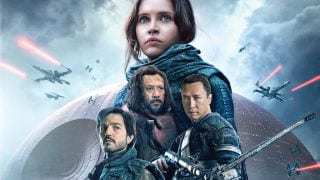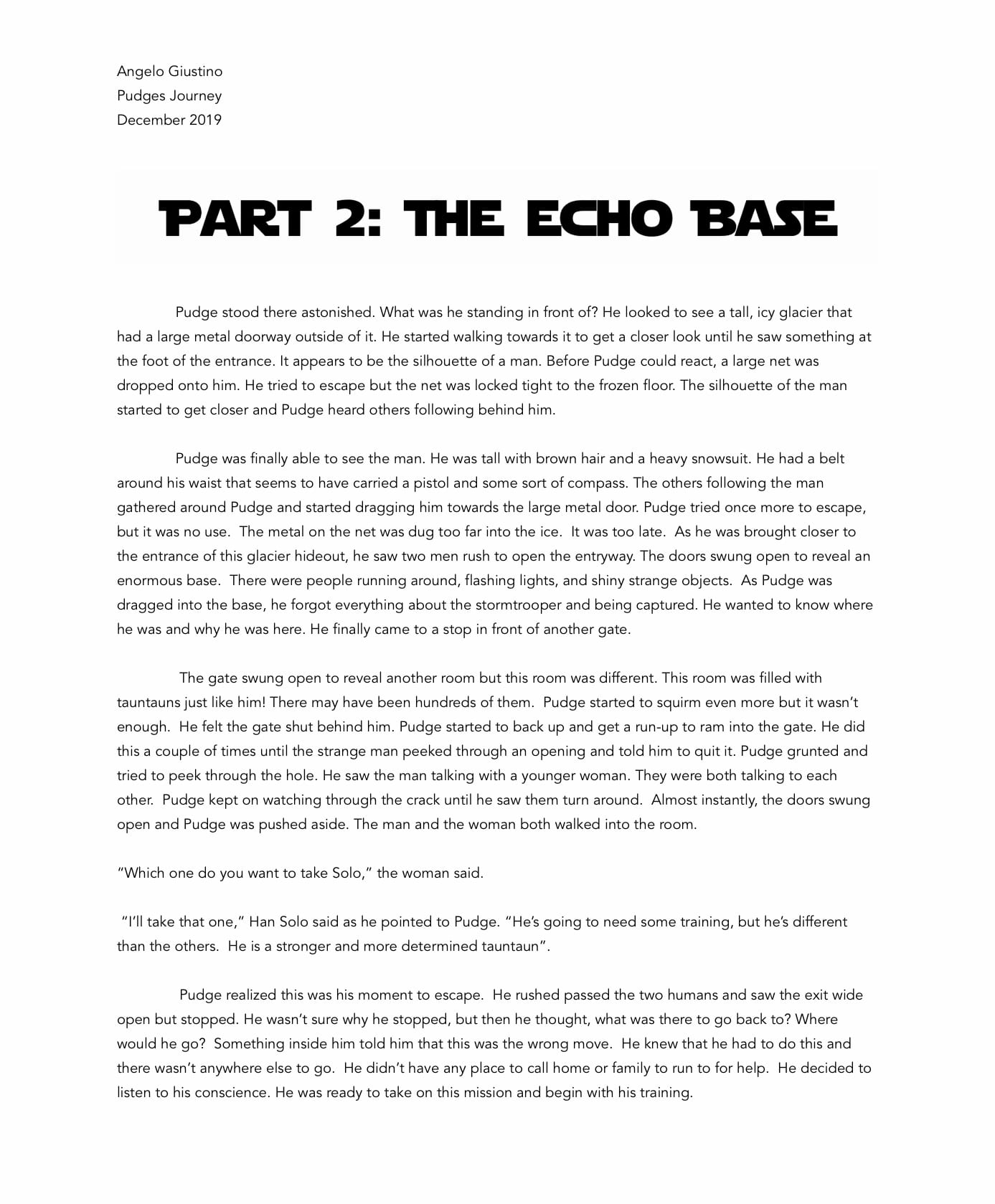In PLP, every year we have two exhibitions, a winter exhibition and a spring exhibition. Christmas break was about a month away which meant that it was time for another exhibition. I was thinking back at past exhibitions such as the religion one and our blue sky exhibition. What would we have to create? What do we have to do to reach the end goal? Before I could answer any of those questions, I had to find out what would the topic for this exhibition be?
The topic was Star Wars! I knew that this was going to be a fun unit and exhibition because I love Star Wars. The driving question for this project was what “how might we build an interactive exhibit that explains the hero’s journey?” We had to work together in groups to individually create a part of a story about a smaller character in the Star Wars franchise and talk about its hero’s journey. I worked in a group with Felix, Brenton, Julia, Kaden, Meg, and Ciara to create the final story. I assumed that just like the other exhibitions we’ve done in the past but I was completely wrong.
Alongside that, we needed to create and show off an artifact that represents our part of the story. This could be anything we wanted it to be, a physical object, a digital creation, or even a piece of artwork. We also had to show the process and steps we went through to create this artifact. Before we could do any of that, we had to complete some separate milestones.
#1 Star Wars: Your Opinion
In this assignment, we simply had to write about reasons we think people are still interested in Star Wars today. We had to research and create an opinion on why people still love Star Wars just as much as they did years ago. The competency I showed through this assignment was being able to express and support my opinion. I did this by using technology and different strategies to research and understand why Star Wars is so important to people. Once I had a good opinion, I was also able to back it up with evidence. One of the reasons I found was that some people get nostalgic
and understand why Star Wars is so important to people. Once I had a good opinion, I was also able to back it up with evidence. One of the reasons I found was that some people get nostalgic
from watching Star Wars from when they were young. Some of them still want to find out what happens next and share those experiences with family and friends. I found this out after researching and comparing different articles on what makes Star Wars so lovable.
#2 Star Wars: Movie Review Blog Post
Another step for getting us prepared for the exhibition was to write a review of a Star Wars movie (You can click here to read that blog post). In this post, I reviewed the Star Wars movie “Rogue One” and talked about why I thought this was such a great movie. Like the assignment before, this post was a lot about my opinion and how I could back it up with facts. The competency in this post was also how could I express my opinion and back it up with evidence. I showed this by using techniques such as jogging down short notes in different parts of the movie and reading other writer’s opinions to see if I had a similar opinion or not. This helped me with narrowing down my ideas and finding good facts to back up my opinion. One of the opinions I had was that Rogue One was different from the other Star Wars movies in many ways. I backed it up with examples such as its one of the only Star Wars movies where all of the main characters in the story die in the end. I think that it was important though to convey the message of how important the rebels feel it is to take down the empire.
#3 Star Wars: Your Story
This was probably the most important milestone in humanities for the exhibition. This was where we had to finalize our part of the hero’s journey (story of our character or hero) and put it together with the rest of our group’s stories. I created the 2nd part of the story out of 7 parts. Our story was about Pudge, the tauntaun. He was captured, and trained by the rebel alliance and sent on a mission to save Luke Skywalker on the frozen planet, Hoth. My part of the story goes into greater depth on how Pudge was captured.
The competencies I focused the most on when writing this part of the story was my ability to create and extend shared understandings. There was a lot of editing and revisions that went into the final draft of this story. One of the ways I was able to improve my creativity and understanding of literary vocabulary was through peer feedback. I was also able to understand what sounded off and edited just from that. This also helped show my other competencies such as literary identification, analysis, and writing process. From rereading my work and getting feedback from others, I was able to figure out what small details I’d need to change to perfect my writing.
My Launch Journal
Like I said at the start of this post, along with the story we also needed to create an artifact that had some sort of significance in your story. In my story, when Pudge stumbles across the echo base, he gets captured by the rebels. To capture Pudge, the rebels use special technology such as tracking devices, nets, and cameras.
I wanted to incorporate coding into my project because its something I love doing and I felt like this would be a great opportunity to show my skills. I also wanted to create a physical object that people can look at and admire. After some brainstorming, I decided to create a hologram to show off the technology in my story. My hologram was different from others because I was able to use coding and animation to make mine move around. The slide show is my launch journal showing all of the research and steps that it took to get to my final creation. (Click the slides with videos to watch the videos on youtube).
Finally, it was the day of the Star Wars exhibition. It started off being super hectic with everyone setting up. As we slowly got everything ready, things cooled down and our room was turned into Hoth (the icy cold Star Wars planet). It was then time, people flowed through the doors and started talking to everyone in our room. I have an awesome time talking to people about the hologram I created and how I fit my passion for coding into it. Overall, the night was a success!
Looking back at everything I’ve learned, I think that I’m now able to answer the driving question. The driving question was “how might we build an interactive exhibit that explains the hero’s journey?” I’ve learned that there are so many different factors that go into creating a great good interactive exhibition. For example, you need people who are passionate about their project and that immerse the listener into their story. You need the room to have the same look and feel for your hero’s journey story. You want to take the audience on the same journey the hero went on. If your audience doesn’t understand whats going on, then they will just get lost and learn nothing from the experience.
Anyways, this the end of the blog post. I hope that you learned something new from reading this post. Thanks for reading! 👋



